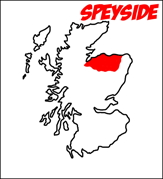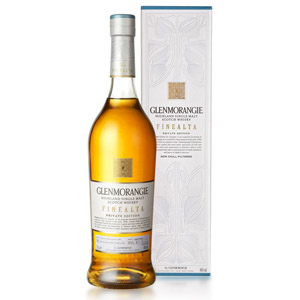I previously reviewed (and liked!) the 10 year release from Tamdhu after their major brand revamp. They haven’t exactly blown up since then, but when I was at the liquor store in my full peri-apocalyptic hazmat gear looking for a sherry bomb to include in a Zoom whisky tasting for my college friends, a bottle of the 12 year caught my eye. Now, I have to admit I was looking for my go-to sherry bomb under $50: GlenDronach 12 year, which I would have definitely used for this tasting if it had been in stock. The Aberlour was overpriced and the Macallan was ridiculously overpriced, so I decided to take a chance on the Tamdhu.
Aged exclusively in sherry casks for the full 12 years of maturation for that pure sherry bomb goodness, Tamdhu uses both first fill and refill American and European Oloroso sherry casks. I’ve discussed sherry aging on this blog before, and the topic is (as ever) murky. It’s probably safe to assume that the company is using whatever “real” sherry barrels (those would be the European oak casks) it can get its hands on, while supplementing their supply with American oak (ex-bourbon) that has been “seasoned” with sherry. “Seasoned” here means the casks are painted with a sherry-derived sludge and allowed to sit for a few weeks or months. As gross as that sounds, the practice is widespread and due to the very low global demand for aged sherry, it’s the only thing standing between us and a dramatic lack of sherry-aged whisky.
The 12-year expression was launched in the Fall of 2018 to replace the 10 year. It’s not often these days that a single-malt brand increases the age-statement on its flagship expression. The whisky is bottled at 43% ABV without added color or chill filtration, and retails in the low $60 range, which is slightly more than the 10 year used to fetch.
Nose: Delectable, fruity aroma with a lot of both fresh and dried/jammy fruits: blackberry, pear, fig, raisin, red currant, and red apples. Under all the fruit there is a layer of pound cake and butterscotch. A rest in the glass reveals a mild tart vinegar note, like sherry vinegar or red wine vinegar. Polished… downright elegant.
Palate: Moderate, nearly syrupy body. On the tongue, the fruits turn predominantly dried: prune, raisin, fig cake, berry jam. There is quite a lot of oak, with barrel char that is almost smoky and tannic, slightly astringent oak that starts to dominate. The grain is very much in the background, overshadowed by the oak and dried fruits.
Finish: Medium length. Charcoal again, with surprisingly little of the fruit notes carrying through. Mouth-drying oak tannins, slightly bitter barrel char, and a tinge of menthol on the tail end.
With Water: A few drops of water increase the nose tickle without adding much else. The water brightens up the fruit on the palate, though, and adds a layer of malty sweetness that was lacking. The finish also picks up a tart note. Water is a great idea with this one.
Overall: This has an excellent aroma, and a decently well-balanced array of flavors on the tongue. However, it starts to disappoint on the finish, which is where it falls down against classic sherry bombs like Macallan and GlenDronach. It’s around the same level of quality as the retired Tamdhu 10 year, although the extra maturation has added both fruit and bitterness in equal measure. I’m happy with the purchase, but missing my GlenDronach 12.


About The Distillery
This Speyside distillery was built in 1896 and was soon sold to Highland Distillers (now a subsidiary of Edrington). Tamdhu is known mostly as the site of the only functional Saladin box-style maltings in Scotland, which produces all of the distillery’s own malt requirements and also supplies unpeated malt to Highland Park and Glenrothes as well (or did, when it was owned by Edrington). Tamdhu has six stills and uses wooden washbacks. Its malt was often used in The Famous Grouse, J&B, and Cutty Sark blends while it was owned by the Edrington group. In 2011 the distillery was sold to Ian MacLeod Distillers, owners of Glengoyne and several blended brands, after being shuttered for three years. Water comes from either the Tamdhu burn (which flows into the Spey), or from an on-site well that taps into the gravel of the River Spey. If the distillery still uses the well, that would make it the only distillery in Scotland that still uses water directly from the Spey.






I largely agree with SN here in that Tamdhu 12 swims in the same sherry-coated pool as several other entry level scotches, such as Aberlour, Glengoyne, Dalmore, & Glenfarclas. I also agree that Glendronach 12 delivers a more robust experience, but that can at least partially be attributed to the higher ABV (46%). Psst… don’t tell anyone else, but Benriach 12yr Sherry Wood is better than all of them.
Is it just me or was the old 10 year old much more of a sherry bomb than the new 12? Is it because of cask seasoning? This one reminded me of Glenfarclas 12 instead of GlenDronach 12. I had been rotating between the GD 12 and the BenRiach 12 for my non cask strength sherry bomb, but unfortunately I haven’t been able to find the BR in about a year. As a side note, if anyone sees a bottle of GD cask strength (I just finished batch 8, 61% abv) grab it.
Have you ever seen this article by Ruben Luyten?
https://www.whiskynotes.be/sherry-casks-in-the-whisky-industry.pdf?pdf=sherry-casks
It’s quite informative. Ruben dispels the myth that sherry casks, the ones used to mature sherry that people drink, are used or have ever been used to mature scotch whisky. So I’m not sure “drinking more sherry” would help the scotch whisky industry in any direct way.
Thanks for the article – a very good read. I think the key point is that the concept of the “sherry cask” is somewhere in between. As Ruben notes, whisky has never been aged in sherry solera casks (the casks used to AGE sherry). However, as sherry (and port and other marketable drinks) were historically shipped via cask to their ultimate bottling/serving destinations, casks that had held sherry and other fortified wines for transport/storage were readily available to the whisky industry. This was especially true before American bourbon and its one-and-done barrel law flooded the market with cheap oak barrels. It follows, thus, that the decrease in demand for sherry also decreased the demand for sherry casks (the transport kind), which created a drought of sherry-flavored wood that had to be met via other means. (It is true also that new laws requiring sherry to be bottled in Spain eliminated what was left of these transport barrels.) The author suggests that the “sherry sludge” approach (paxarette) which is cheaper and easier than seasoning new barrels with real sherry has ceased. I’m not sure that’s quite true. First, there are definitely older barrels of scotch aging that used this technique when it was more common. Also, as there is no law against it nor any transparency/disclosure requirement, it is very possible or even likely that less-reputable producers are still using the cheaper paxarette to season their casks. Ultimately, what you say is true: If demand for drinking sherry increased, it would be met with shipped cases of bottles, not by sherry-containing casks, and thus would not help the whisky industry. That said, since it is sherry bodegas that are producing the “seasoning” wine, or even seasoning the casks themselves, it behooves drinkers of scotch to support the sherry industry to preserve this source of flavored casks. If bodegas go out of business due to lack of demand for sherry, there will be fewer bodegas around to season casks. Cheers!
First of all, I’m all in favour of more people drinking sherry. I’m a huge fan and I think it’s a shame that it’s fallen out of favour.
I could be wrong, but I believe the SWA declared paxarette an “illegal additive” awhile back. Either way, these discussions are interesting.
Amazingly informative article, Joel. Thank you!